Key Elements for Crafting Exceptional NFT Art
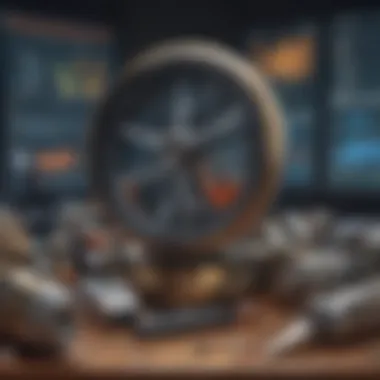
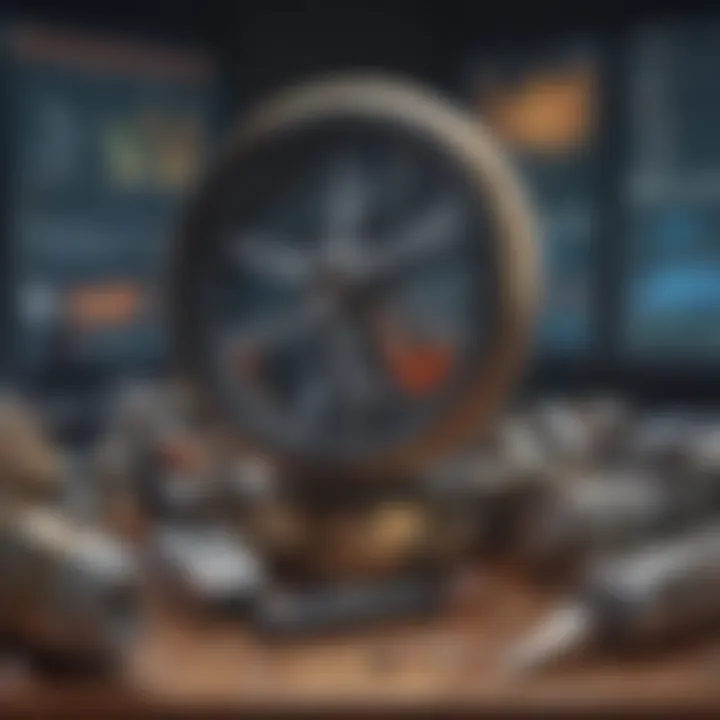
Intro
In the evolving landscape of digital art, NFTs (Non-Fungible Tokens) have emerged as a revolutionary medium, spurring both excitement and intrigue among artists and collectors alike. Each piece of NFT art tells a unique story, merging innovation with the traditional concepts of creativity and ownership. Understanding the essential components that contribute to the successful creation of NFT art is pivotal for artists hoping to navigate this domain effectively.
While the allure of NFTs can be captivating, the technical and conceptual foundations behind them must not be overlooked. Artists need to grasp not only the artistic process but also the implications of blockchain technology, minting platforms, and effective marketing strategies. This comprehensive guide will explore various dimensions essential to NFT art creation, helping artists carve their niche in this new digital frontier.
Investment Dictionaries
Key Financial Terms Explained
When entering the world of NFTs, it is crucial to familiarize oneself with some key financial terms that are inherent to this digital art market. Here, we’ll demystify some of these vital lexicons:
- NFT (Non-Fungible Token): Unlike cryptocurrencies, NFTs are unique digital assets verified using blockchain technology. They can represent ownership of a range of digital items, from art to music to virtual real estate.
- Minting: This is the process of turning digital files into a part of the blockchain as a token. It's akin to putting a digital certificate on art, signaling its authenticity.
- Gas Fees: These are transaction fees paid to miners on a blockchain for the processing and verification of transactions. They can fluctuate significantly, impacting the overall cost of minting NFTs.
- Royalties: Many NFT platforms allow creators to set a percentage for recurring royalties, which means artists receive a cut every time their art resells.
Having a grip on these terms prepares artists and investors alike for the conversations and transactions that will dominate the space.
Understanding Investment Jargon
Understanding the investment side of NFTs can be as perplexing as navigating a maze. Some jargon that often crops up includes:
- Market Capitalization: The total value of all tokens in circulation within a particular NFT project.
- Liquidity: The degree to which an asset can be quickly bought or sold in the market without affecting its price.
- Speculation: The act of buying an asset with the hope that it will increase in value over time.
These terminologies not only equip you with the knowledge to talk the talk but also help in making informed decisions about your investments in the NFT art space.
Expert Advice
Tailored Investment Strategies
When crafting an NFT strategy, it's essential to adapt your approach to the current marketplace and your goals. Consider the following:
- Researching Trends: Stay updated on current trends within the NFT space. Follow artists and projects that are gaining traction to ensure you're aware of what collectors are interested in.
- To Diversify or Not?: Think about spreading your assets across various NFT art projects, rather than betting it all on one!
- Audience Engagement: Build a community around your art. Engaging with potential buyers on platforms like Facebook and Reddit can foster loyalty and create buzz around your creations.
Risk Management Tips
In any investment, especially a rapidly evolving field such as NFTs, there are inherent risks. Here are some insights:
- Set Budgets: Determine what you're willing to invest and stick to it.
- Educate Yourself: Knowledge is power. Understand the technical aspects of the platforms you use, and always keep learning about the trends and risks.
"In the world of NFTs, knowledge can be your best shield against poor investment choices."
- Evaluate Your Investments: Keep a close watch on the performance of the NFTs you're holding, and be prepared to reassess your portfolio regularly.
This comprehensive approach, from understanding key financial terminology to managing investment risks, will empower artists and investors alike to make informed decisions as they embark on their NFT journey.
Prolusion to NFT Art
In today’s ever-evolving digital landscape, understanding NFT art becomes essential for artists and investors alike. The fusion of artistry and technology presents unprecedented opportunities, yet it comes with a unique set of challenges to navigate. Grasping the fundamentals of NFT art not only enhances the appreciation of this modern medium but also plays a crucial role in realizing its potential. As we dive into this dynamic world, it's important to recognize several key elements that shape this exciting terrain.
Non-fungible tokens have sparked conversations around ownership, creativity, and market strategies. Much like the way a traditional painting holds value in a gallery, NFT art asserts its worth in digital realms, differing in nature yet equally significant. Artists gain not just a medium to showcase their work but a means to directly engage with their audience. This progressive shift reshapes how we perceive art ownership and distribution in ways that weren't possible before.
Understanding NFT art also opens doors to potential revenue streams and innovative collaborations. For artists, this could mean exploring new paradigms of income that traditional galleries might not offer. For investors, it represents a novel asset class, ripe with speculation but equally rewarding for those who are informed.
As we delve deeper into this guide, we'll establish clarity about what NFT art truly encompasses and observe its evolution over time.
Understanding Non-Fungible Tokens
The debacle of cryptocurrency has led many to scratch their heads, but understanding tokens, especially non-fungible ones, is pivotal for anyone making their way into NFT art. Non-fungible tokens, or NFTs, are the backbone of this thriving digital art market. They offer artists a way to establish ownership, authenticity, and transferability of their works in a manner unlike anything we’ve seen before. In straightforward terms, NFTs can be thought of as unique digital certificates that attest to the ownership and origin of a specific piece of content.
Characteristics of NFTs
Unique Ownership
Unique ownership is perhaps the cornerstone characteristic when discussing NFTs. Unlike standard digital files that can be duplicated ad infinitum, an NFT guarantees that there is one verified owner at any given time. This uniqueness gives artists a solid foothold in the environment they navigate. When buyers spend their hard-earned cash, they’re not just acquiring a digital image; they’re purchasing access to a unique record on the blockchain.
The allure of owning a one-of-a-kind digital asset can’t be understated. With tapestries of digital art floating around, knowing you possess a legitimate edition sets your collection apart. However, it’s worth noting that while ownership is unique, the artwork may still be publicly accessible, which raises questions about value when the art itself can be viewed by anyone.
Blockchain Technology
Blockchain technology is the wizard behind the curtain of NFTs. This decentralized ledger verifies transactions and solidifies ownership in real-time. When an artist mints an NFT, it is recorded on a blockchain like Ethereum, ensuring the information is immutable and transparent. This not only enhances trust but also diminishes the manipulative practices seen in traditional art markets.
The benefit of blockchain is clear: it creates an unhackable digital ownership record that anyone can audit. However, the energy consumption of some blockchain systems can give pause, particularly among environmentally conscious creators and collectors. This tension between transparency and sustainability often plays a significant role in discussions about which blockchain to choose for minting NFTs.
Transferability and Security
Transferability and security are two sides of the same coin when it comes to NFTs. The ability to transfer ownership effortlessly makes NFTs appealing to artists and collectors alike. A few clicks can change the ownership, effectively creating a marketplace that’s both liquid and dynamic.
On the security front, NFTs leverage cryptography to protect ownership information, making it highly resistant to fraud. Buying an NFT — whether that’s a vibrant animation or an intricate digital painting — ensures that you own a secure and authenticated digital asset. Yet, like all things, there are challenges; the volatile nature of the crypto market poses risks for investors, and there's the potential for loss if platforms are compromised.
"Blockchain technology transforms the mere idea of ownership into an unalterable digital reality."
Role of Smart Contracts
Smart contracts are essentially the self-executing agreements that form the backbone of NFTs. They automate transactions and ensure terms are met, eliminating the need for intermediaries. This has made the process of buying and selling NFT art more efficient than traditional methods. However, this technology is not without its caveats — incorrect coding can lead to financial mishaps. Understanding smart contracts is a must for artists who wish to navigate the NFT landscape effectively.
Required Tools for Creating NFT Art
Creating NFT art requires a blend of technical prowess and artistic vision. The choice of tools can make or break an artist's ability to bring their ideas to life in this fast-evolving digital landscape. It’s not just about creating stunning visuals; it's also about ensuring these creations are prepared for the blockchain. As artists step into the NFT realm, identifying essential tools becomes paramount.
Digital Art Software
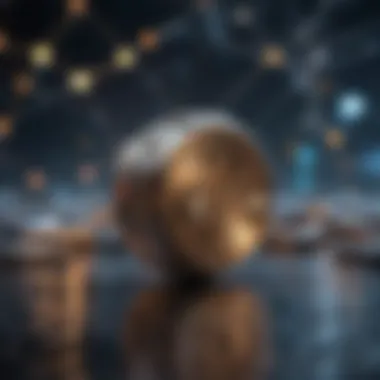
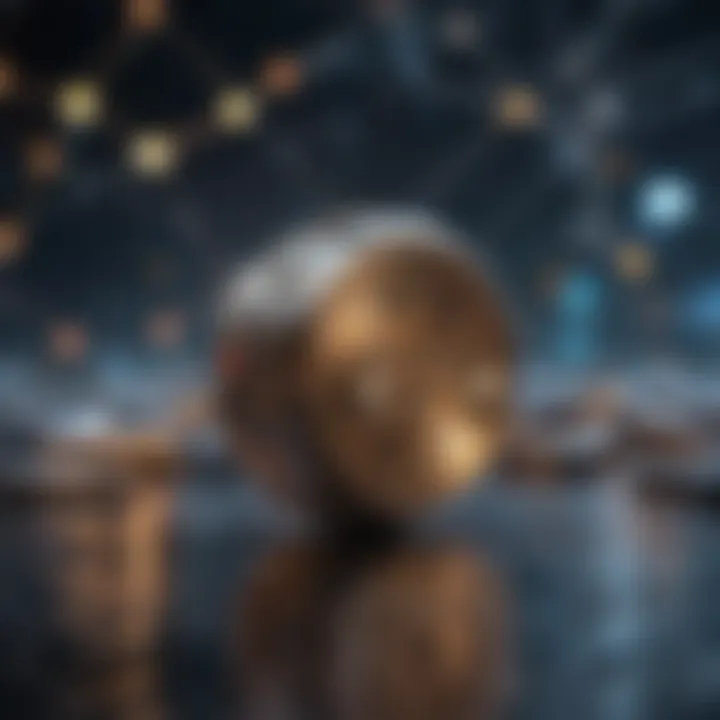
Graphic Design Programs
Graphic Design Programs are the backbone for many artists looking to dive into NFT creation. These programs, such as Adobe Photoshop and CorelDRAW, allow artists to manipulate and fine-tune images down to the pixel level. A key characteristic of these programs is their versatility. They come packed with tools that enable a wide array of styles, from photo manipulation to vector graphics.
Why they matter for NFT art: The precision and capabilities offered by Graphic Design Programs make them beneficial choices for digital creators. They provide a familiar workspace for artists used to traditional media but evolved for the digital age. Their unique feature of layers allows artists to create complex images systematically, helping in organization and flexibility during the creation process.
Yet, these programs can be resource-heavy and may leave some beginners feeling overwhelmed. There’s a learning curve, especially for those new to digital art. However, the payoff is substantial; once mastered, they provide a robust foundation for crafting high-quality NFT assets.
3D Modeling Tools
3D Modeling Tools cater to those inclined toward creating dimensional and immersive art. Software like Blender and Autodesk Maya stands out in this realm. These programs excel at constructing and manipulating three-dimensional objects, enabling creators to design intricate environments and characters.
A significant contribution to NFT art: The ability to make models that can be animated or rendered for various uses in the metaverse adds value to an artist's portfolio. The real-time rendering feature in tools like Blender, for instance, allows artists to see results instantly, fine-tuning their work as they go. Creating 3D visuals can boost an artwork's appeal, making it more engaging and unique.
However, the complexity of these tools may be a barrier for newcomers. Not every artist may desire the steep learning curve associated with mastering 3D modeling. But for those willing to invest the time, the result can be revolutionary, bringing depth and a fresh perspective to digital creations.
Animation Software
Animation Software, such as After Effects and Toon Boom, offers artists a chance to breathe life into their creations. Animation plays a vital role in making NFT art stand out in crowded marketplaces. The key characteristic here is movement—bringing static images to life can significantly increase engagement and desirability.
A beneficial aspect for NFT art creators: Animating artwork can transform a simple piece into a sought-after collectible. The unique feature of frame-by-frame detailing makes the animation process flexible, allowing artists to craft intricate stories through motion. This ability to introduce movement is crucial in an era where audiences look for interactive and dynamic experiences.
However, animation software can be daunting due to its sophisticated features and tools. Artists might find themselves tangled in the complexities, leading to frustration instead of creativity. However, a well-animated piece can capture attention like nothing else, providing tremendous potential for artists willing to take the plunge and explore motion in their work.
Hardware Considerations
Computer Specifications
When discussing tools for creating NFT art, one cannot overlook the importance of Computer Specifications. High-performance computers, equipped with robust processors and ample RAM, allow artists to use advanced software with ease. Detailed rendering and large file operations require computational strength, especially when working with high-resolution images.
Why this matters for NFT creators: A powerful setup streamlines the creative process. The ability to run software smoothly without lag brings a level of efficiency crucial for productivity. Unique features, like multiple display configurations, can enhance workflow, allowing for multitasking and better organization of art assets.
However, the cost of top-tier hardware may be a consideration for many artists. Those with tighter budgets might have to compromise, which might impact their creative output. Nonetheless, in the competitive NFT space, investing in robust specifications can pay dividends in quality and efficiency.
Graphics Tablets
Graphics Tablets offer a tactile experience that is often missed when using a mouse. This hardware enables artists to draw directly onto a digital surface, making the transition from traditional to digital somewhat smoother. The pressure sensitivity found in tablets provides a level of detail that can be hard to achieve with a standard mouse, allowing artists to add nuance to their strokes.
A key reason their popularity is increasing: Many artists find that the natural feel of drawing on a tablet leads to more organic results. Unique features like customizable hotkeys enhance productivity further, getting rid of unnecessary disruptions during the creative flow.
Still, graphics tablets can come in various price ranges, and finding the ideal model that fits specific needs can be a bit tricky. Beginners might struggle to find the balance between cost and functionality. However, those who succeed in integrating tablets into their workflows often find their art improves in both quality and speed.
"Choosing the right tools is as crucial as the art itself; they can either elevate your work or hinder your creative process."
Choosing a Blockchain Platform
Selecting the right blockchain platform is a pivotal step for artists looking to mint their artwork as NFTs. Each blockchain offers its own set of features, advantages, and drawbacks that can influence everything from the costs associated with transactions to the broader ecosystem of buyers and collectors. Understanding these aspects will help creators make informed decisions that align with their artistic goals and financial expectations.
Popular Blockchain Networks for NFTs
Ethereum
Ethereum stands tall as the forerunner in the NFT space. It was among the first to introduce smart contracts, allowing artists to create and manage their NFTs seamlessly. One key characteristic of Ethereum is its expansive user base and well-established infrastructure, making it a favorable option for new artists.
The biggest advantage of Ethereum is the sheer number of marketplaces available for trading NFTs, such as OpenSea and Rarible. However, this popularity comes with a catch: transaction fees, commonly known as "gas fees," can vary widely and sometimes soar during periods of high demand. For artists, this can translate to significant costs that might not always be accounted for in their budgeting.
Binance Smart Chain
Binance Smart Chain is shaking things up by offering a more economical alternative to Ethereum. The characteristic that stands out with Binance Smart Chain is its lower transaction fees, which is indeed a welcoming feature for artists who want to minimize their costs while maximizing their profits. This blockchain has seen growing popularity due to its efficient speed and ease of use.
One unique aspect is its dual chain architecture that allows users to easily transfer assets with Binance Chain. While this is indeed a benefit, one can't ignore the fact that it might lack the same level of decentralization and community trust as Ethereum. Yet, for artists seeking a cost-effective means of minting NFTs, it has its allure.
Tezos
Tezos is another blockchain that’s gaining traction among NFT creators. What makes it prominent is its commitment to sustainability, being one of the energy-efficient options in the NFT arena. With proof-of-stake consensus, it consumes significantly less energy compared to Ethereum’s proof-of-work system.
Artists concerned about environmental impact find Tezos quite appealing. Its low fees and user-friendly interface also add to its attractiveness. However, a less prominent marketplace than Ethereum could hinder exposure for new works. Despite this hurdle, artists focused on a responsible approach to NFT minting might find Tezos a beneficial choice.
Factors to Consider When Selecting a Platform
When weighing your options, several factors should guide your selection of a blockchain platform. Let’s delve into some key considerations.
Transaction Fees
Transaction fees can make or break an artist's budget. NFTs come with their own set of costs, and knowing what platform offers the most reasonable fees can save you a small fortune. Each blockchain has its own fee structure, which can fluctuate based on network demand.
A platform with high transaction fees might discourage sales as they eat into profits, especially for artists who sell lower-priced items. Thus, it is essential to understand the overall cost structure of the blockchain you are considering.
Community and Support
Choosing a blockchain with a strong community can enhance your experience as an artist. Community support plays a crucial role in sharing knowledge, trading NFTs, and receiving feedback. Platforms with an active community not only provide FAQs and guides, but also avenues for collaboration and marketing.
While vibrant communities exist on various platforms, those committed to NFT art creation often find like-minded peers who can offer support and bolster credibility when launching artworks.
Environmental Impact
In today’s world, environmental awareness is at the forefront of many decisions. The ecological footprint of NFT transactions is increasingly becoming a factor for artists to consider. Some blockchains, such as Tezos, focus on reducing their environmental impact, offering artists a way to align their values with their practices.
Choosing a blockchain with a lower carbon footprint can also be an appealing decision for eco-conscious consumers who might favor art that uplifts sustainable practices.
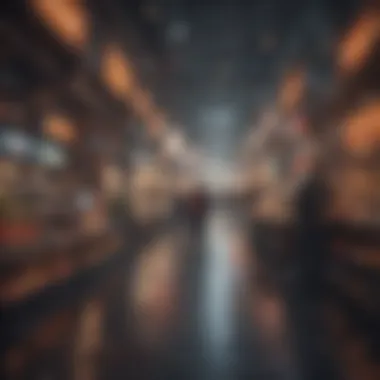

"Choosing the right blockchain is not just about technology but also about the community and values it represents."
When you assess blockchain platforms for NFT art creation, remember that each has its own strengths and limitations. Understanding these components is critical for tailoring your approach and ultimately enjoying success in the NFT space.
Minting Your Artwork as an NFT
Minting your art as an NFT marks a pivotal moment in the life of any digital artist. It is where your creation transforms from a mere digital file into a distinctive token with undeniable ownership and provenance, thanks to blockchain technology. This process not only grants digital artworks authenticity but also opens new avenues for monetization. It becomes essential for artists to understand the minting process thoroughly, as it involves multiple steps and considerations. Knowing how to navigate this terrain can spell the difference between success and obscurity in the burgeoning NFT market.
Understanding the Minting Process
At its core, minting is akin to creating a certificate of authenticity for your digital art. Once you mint an NFT, it gains unique identifiers that distinguish it from any other asset on the blockchain. This unique aspect is vital because it bestows a sense of rarity upon your art. Furthermore, minting ensures your artwork is secure, traceable, and, possibly, profitable. It's the gateway to entering the NFT marketplace, where collectors are eager to purchase unique pieces.
Necessary Steps for Minting
Selecting a Marketplace
Choosing the right marketplace is your first step towards minting an NFT. This aspect is crucial as different platforms cater to various types of art and audiences. Popular marketplaces such as OpenSea, Rarible, or Foundation offer various features that can facilitate your selling process. For instance, OpenSea supports a wide range of digital goods, making it an ideal place for those looking to showcase diverse art styles. This flexibility can be advantageous in attracting a broader audience.
However, while popularity can be a boon, it may also mean increased competition. Artists might find their works lost in the sea of countless NFTs, which could affect visibility. It's imperative to research marketplaces—understanding their demographics, user experience, and fee structures can greatly influence your success.
Uploading Your Artwork
Uploading your artwork is a straightforward yet significant step in the minting process. Once you've selected your marketplace, you will need to prepare your files. This step involves ensuring your artwork meets the platform's specifications. Typically, you can upload various file types, including images, videos, and even 3D models, depending on the marketplace.
A benefit of uploading to platforms like Rarible is that they often provide a seamless interface, which can make the process intuitive even for those less tech-savvy. However, one should be cautious about the format and resolution to avoid potential quality loss; high-resolution files preserve detail better, which could be pivotal for collectors. On the downside, some platforms might charge high gas fees during busy periods, which could impact your profits.
Setting Royalties and Fees
Setting royalties and fees is perhaps one of the most advantageous features of minting NFTs. Artists can determine a percentage of future resale prices as royalties, ensuring ongoing income from their creations. This characteristic is a breakthrough in the traditional art market, where artists typically receive no further payment once an artwork is sold.
For instance, if you set a royalty fee of 10% on your NFT, every time it changes hands, you earn that percentage. This can add up significantly over time if your work becomes desirable and sought after. However, artists need to ensure their fees remain competitive; exorbitant royalty percentage might discourage initial buyers. Balancing your needs with market expectations can optimize your success in the long run.
"Minting is not just creating a digital token; it's about claiming a space in an ever-evolving artistic realm."
In summary, the process of minting your artwork as an NFT encompasses a series of thoughtful steps. From selecting the right marketplace to strategically setting your royalties, each aspect contributes to building your presence in the NFT space. With the proper knowledge and approach, artists can maximize the potential inherent in this unique form of art ownership.
Marketing Your NFT Art
Marketing your NFT art is like trying to shine a light in the vast dark sea of digital content. In a crowded space teeming with creators, understanding how to effectively promote your work is crucial. The advent of NFTs has captured the imagination of many, yet the marketing strategies that accompany your creation can determine whether it sinks or swims. The right marketing can amplify your presence, build a following, and ultimately enhance your sales.
Building an Online Presence
Establishing an online presence is the cornerstone of marketing NFT art. Without it, your digital creations might as well be floating in an abyss, completely unseen.
Social Media Utilization
Social media is a powerful tool for getting your work in front of potential buyers. It spans various platforms—Twitter, Instagram, TikTok, and even Facebook, each offering unique avenues for visibility. One noteworthy aspect of social media is its instant connectivity. Artists can share teasers, engage in conversations, and build a narrative around their work, creating an engaging, ongoing dialogue with fans and prospective buyers.
However, using social media effectively requires tactics. Regular posts with eye-catching imagery can draw attention, but it’s also essential to mix in personal stories or insights behind the art. This adds depth, allowing followers to connect with both the art and the artist, creating a bond that may lead to sales. Yet, be cautious; incessant self-promotion can backfire. It might turn off followers if they sense it’s all about the sale and not about genuine interaction.
Creating a Personal Brand
In marketing, a personal brand serves as your unique fingerprint in the vast digital world. A strong personal brand helps you stand out and conveys what you represent. It’s all about defining your artistic identity and consistently reflecting it in every piece you share. This leads to an unmistakable identity across platforms that buyers can identify with.
The beauty of a personal brand lies in its authenticity. Buyers nowadays seek connections—not just cold transactions. By sharing your journey, creative processes, and artistic evolution, you foster a sense of community. But, developing that brand also requires commitment. You must be consistent in the image and message you portray not just online but in every piece of art you mint. This could be a double-edged sword as inconsistency can undermine the trust you build with your audience.
Engaging with the Community
Engagement is about more than just broadcasting your work; it's about building relationships and gaining insight. The NFT space, like any artistic community, thrives on interaction. When people see an artist actively participating, they are more likely to support and invest in their work.
Participating in Art Contests
Art contests are a noteworthy aspect of community engagement. Entering contests allows artists to showcase their work to a broader audience. Winning, or even just participating, can provide heightened recognition and validation. It puts your art in front of judges and viewers who may not have stumbled upon your work otherwise. Additionally, such contests often foster a sense of camaraderie among creators, and winning can even lead to opportunitites for future collaborations.
However, joining contests isn't without its drawbacks. Competition can be fierce, and not every entry will lead to substantial exposure. Still, the potential upside of getting noticed can outweigh the risks.
Joining NFT Forums
NFT forums provide not only information but also a community of like-minded individuals. Engaging in discussions, asking questions, and sharing insights about the NFT landscape can position you as a knowledgeable figure in the space. This not only helps in learning but often results in unexpected opportunities, such as collaborations or commission requests. The key aspect of joining these forums is collaborative learning. Artists and collectors alike exchange ideas, trends, and techniques, creating an atmosphere ripe for growth.
However, the landscape of forums is diverse. Some may be full of noise, with opinions that vary widely in value. Thus, it’s crucial to carefully select which forums to engage in, ensuring that they align with your artistic vision and goals.
Marketing your NFT art isn't just a strategy; it's an ongoing conversation within a community that thrives on shared experiences, creativity, and authenticity.
The Financial Aspects of NFT Art
The exploration of NFT art ventures beyond the mere allure of creativity and finds its roots firmly in the financial world. Understanding the financial landscape is crucial for artists delving into this novel medium. It shapes their approach not only to creation but also to marketing, selling, and sustaining their artistic endeavors. Evaluating market dynamics and revenue opportunities can lead to informed decisions, resulting in a more stable financial outcome.
Understanding Market Trends
Market trends are the pulse of the NFT realm, reflecting shifts in price dynamics and collector behaviors. Artists must keep an eye on these patterns to ensure that their works resonate with current interests, ultimately influencing market success.
Price Fluctuations
Price fluctuations in the NFT market can be as wild as a rollercoaster ride. At times, the value of digital artwork can soar, making headlines with eye-popping sales, while at others, it can nosedive, leaving creators and investors in a bind. This volatility stems from a variety of factors, such as celebrity endorsements, social media trends, and general market sentiment.
What makes recognizing price fluctuations essential is their ability to inform future pricing strategies. For artists, understanding when to sell can maximize returns. The temptation might be to hold onto a piece, hoping for it to skyrocket even further, but that can backfire. Navigating these juicy ups-and-downs lets creators capitalize on peaks.
It’s also worth noting that while some artists reap rewards from price spikes, others face challenges. If too many pieces flood the market simultaneously, individual works can lose their perceived value, presenting a clay-like challenge for maintaining artistic worth amidst financial dynamics.
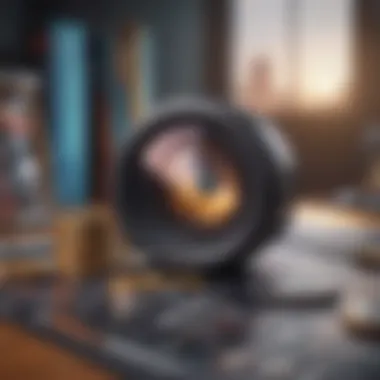
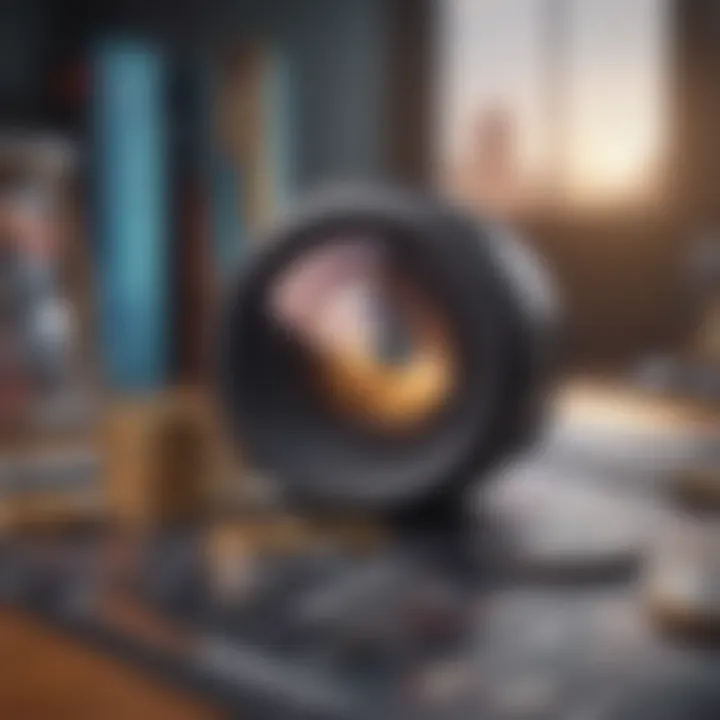
Collector Preferences
Understanding the preferences of collectors is like having a map in a maze. The NFT space is equivalent to a bustling bazaar, where tastes vary widely. Collectors are drawn not just to the artwork itself but also to the story behind it, the artist’s reputation, and unique attributes.
A key characteristic is the desire for exclusivity. Buyers often look for limited edition pieces or those that offer distinct value, such as unique utilities or immersive experiences. This seek for uniqueness drives artists to innovate and enhance their appeal, integrating sound or interactive elements into their work.
Moreover, knowing what collectors are currently passionate about can guide artists in their creation process. Yet, this can be a double-edged sword. chasing trends without staying true to one’s artistic vision can lead to a product that lacks authenticity, possibly damaging one’s reputation in the long run.
Revenue Potential
With the right approach, the financial opportunities in the NFT space can be significant. Artists must navigate this terrain with an understanding of potential revenue streams, which extend far beyond initial sales.
Initial Sales
The first sale of an NFT often sets the stage for everything that follows. This initial revenue can be a monumental moment for budding artists, validating their work in a new frontier. However, it’s crucial to price works appropriately to reflect their value without scaring off potential buyers.
A smart consideration is the strategy behind pricing: opting for a fair price point can encourage quick sales, which helps build momentum and collect valuable data on buyer preferences. But there’s a fine line here—undervaluing artwork might set a precedent that’s tough to shake off. Once an artwork has been sold, establishing higher prices in the future becomes tricky. This makes setting an initial price a key decision with long-term implications.
Royalties from Resales
One of the crown jewels of NFTs is the potential for royalties from resales. This means whenever a piece is resold, the original artist receives a percentage of that transaction. Such a feature democratizes financial benefits, allowing artists to continue profiting from their creations as they gain prominence.
The unique aspect of royalties is that it incentivizes artists to build relationships with their collectors. Artists flourish when their piece becomes desired over time, benefiting both financially and in reputation. However, reliance on this stream can be risky for those who may not enjoy sustained interest or wide popularity.
In summary, navigating the financial aspects of NFT art requires a savvy understanding of market dynamics, pricing strategies, and collector relationships. Navigating this contemporary landscape offers both opportunity and challenges, ultimately shaping an artist’s success in the evolving market.
Legal Considerations in NFT Art Creation
Exploring the legal landscape surrounding NFT art is essential for both creators and collectors. As this is a relatively new field, understanding the intricacies is crucial to navigating potential legal pitfalls. Legal considerations encompass a myriad of factors, such as copyright, intellectual property rights, and various regulatory frameworks. The significance of addressing these legalities lies in protecting an artist's work and ensuring their rights are upheld in the digital arena.
Copyright and Intellectual Property
Copyright plays a vital role in the creation of NFT art. When an artist creates a piece of digital work, they inherently own the rights to it. However, transferring artwork into an NFT complicates this situation. Owning an NFT does not automatically confer ownership of copyright. This distinction is critical.
When an artist mints their art as an NFT, they typically specify what rights they are granting to the buyer. This can vary greatly — some creators may choose to retain all rights, while others might grant limited usage rights, such as the ability to display the piece or resell it in certain circumstances.
Consider the following points when dealing with copyright in NFT art:
- Original Creation: Ensure the art is your own or you have proper licenses for any third-party elements.
- Artistic Intent: Clearly articulate the rights being transferred at the time of NFT minting to avoid future disputes.
- Selling NFT: Remember, selling the NFT doesn't always mean relinquishing copyright; clarify what the buyer is actually receiving.
"Navigating the remnants of traditional copyright in a digital setting is like trying to fit a square peg in a round hole."
Regulatory Landscape
The regulatory landscape for NFT art is evolving as quickly as the technology itself. Different jurisdictions have varying regulations. Some are still catching up, while others have developed forward-thinking policies. Understanding this can be the difference between positioning oneself favorably in the market or running into pitfalls.
Some key factors in navigating this regulatory landscape include:
- Tax Implications: Depending on where you live, selling NFTs could be subject to capital gains tax.
- Consumer Protection Laws: Buyers need to be well-informed about what they are purchasing, and misleading practices could lead to investigations.
- Securities Laws: If a token is deemed a security, it may fall under stringent regulations requiring registration and compliance.
In short, failure to address these legal concerns can lead to significant consequences. Artists should consider consulting with legal experts who specialize in intellectual property and digital assets to stay ahead of the game.
Challenges in the NFT Art Space
The NFT art space is exciting, but it also comes with its fair share of hurdles. Understanding these challenges can equip creators and investors alike to navigate the complexities involved. It’s not just about creating digital pieces that are unique; the practical implications ground the artistic ideas in reality.
Market Saturation
As the NFT market expands, one might feel like they are trying to swim upstream. With countless creations flooding the scene, distinguishing oneself becomes a daunting task. Data shows that as of late 2023, more than 20 million NFTs are available across multiple platforms. This saturation can lead to several issues:
- Visibility: It's tougher than ever for artists to get noticed. As the saying goes, "A needle in a haystack" applies here. With the sheer amount available, your masterpiece might just blend into the sea of digital art.
- Value Dilution: More supply often pushes down demand. When scarcity is diminished, the perceived value of an NFT can plummet, causing financial challenges for creators.
- Quality Over Quantity: The rush to mint new works can compromise artistic integrity. Some creators may lean towards simply churning out NFTs rather than investing time into thoughtful, well-crafted pieces.
Many artists have reported feeling overwhelmed by market noise, which can stifle creativity and lead to burnout. In such conditions, a focused and strategic approach to one’s work becomes crucial. It’s not enough to just produce art; one must also be savvy about how to present it to the right audience.
Maintaining Artistic Integrity
In the face of commercialization, the challenge of maintaining artistic integrity cannot be overstated. The tension between financial success and artistic expression is palpable. Here’s why it’s essential:
- Authenticity: Today's collectors and investors often seek more than just aesthetic appeal; they crave stories and authenticity. When an artist stays true to their vision, they cultivate a following that values their integrity.
- Long-term Value: Investing in genuine artistic expression often leads to sustainability. Art that resonates authentically tends to appreciate more over time. Think of it this way, pieces that come from the heart can create a following that flocks back again and again.
- Reputation: In this interconnected digital world, one misstep or perceived insincerity can damage an artist’s reputation irreparably. Artists must be mindful of trends yet avoid compromising their unique voice for fleeting success.
"Art is not freedom from discipline, but disciplined freedom." - M. F. Husain
Balancing commercial viability with profound artistic expression can feel like walking a tightrope. However, embracing creativity while also understanding market forces can empower artists and help them carve niches that are not only profitable but true to their vision.
Future of NFT Art
The future of NFT art represents a compelling canvas painted with innovation and potential. As a nascent field, it is vital to examine what lies ahead for artists, investors, and technology enthusiasts alike. Understanding the trajectory of these digital assets is crucial for navigating opportunities and challenges that may arise.
Technological Innovations
The landscape of NFT art is deeply intertwined with advancements in technology. Blockchain technology, being the backbone of NFTs, continually evolves, paving the way for novel applications. Innovations such as layer-two scaling solutions improve transaction speeds and reduce gas fees, making it more accessible for artists and buyers. Moreover, developments in artificial intelligence are also playing a significant role. AI can help in generating unique artworks or assisting artists with design processes. The integration of virtual and augmented reality can only heighten user experience too, enabling potential buyers to visualize art in their physical spaces before they make a purchase.
Consider the rise of platforms that allow for dynamic NFTs, which can change or evolve over time. This adaptability opens new avenues not just for artistic creation, but also for storytelling, where the art tells a narrative that can unfold as engagements or certain conditions are met.
In short, technological innovations will be the driving force behind the evolution of NFT art, reshaping how artists create and how collectors engage.
Evolving Market Dynamics
The market dynamics surrounding NFT art are rapidly shifting, and understanding these currents is essential for stakeholders. Buyers are becoming more discerning, seeking not just the next big trend but meaningful investments that resonate with their values.
- Community Engagement: Communities built around NFTs are more than simple buyer-seller interfaces. These online collectives often drive engagement and influence market perception. Artists who actively engage with their communities on platforms like Reddit or Facebook tend to garner more authentic support.
- Cultural Relevance: Current events and social trends greatly affect the market. For instance, environmental concerns may drive demand towards eco-friendly blockchains, like Tezos, which have lower carbon footprints. Similarly, artwork that reflects social justice issues can resonate deeply and fetch higher prices.
- Diversification of Offerings: As more artists enter the scene, the diversity of art forms offers collectors a wider variety. This includes not just static images but interactive pieces, music, video art, and even experiences. The multiplication of offerings requires potential buyers to adapt and decide wisely amidst the abundance.
"The NFT market is not just about ownership; it’s about the community, culture, and narratives interwoven into each piece of art."
With these considerations, both artists and collectors must stay adaptive, continuously learning about market sentiments and emerging technologies to make informed decisions in this ever-evolving space.







